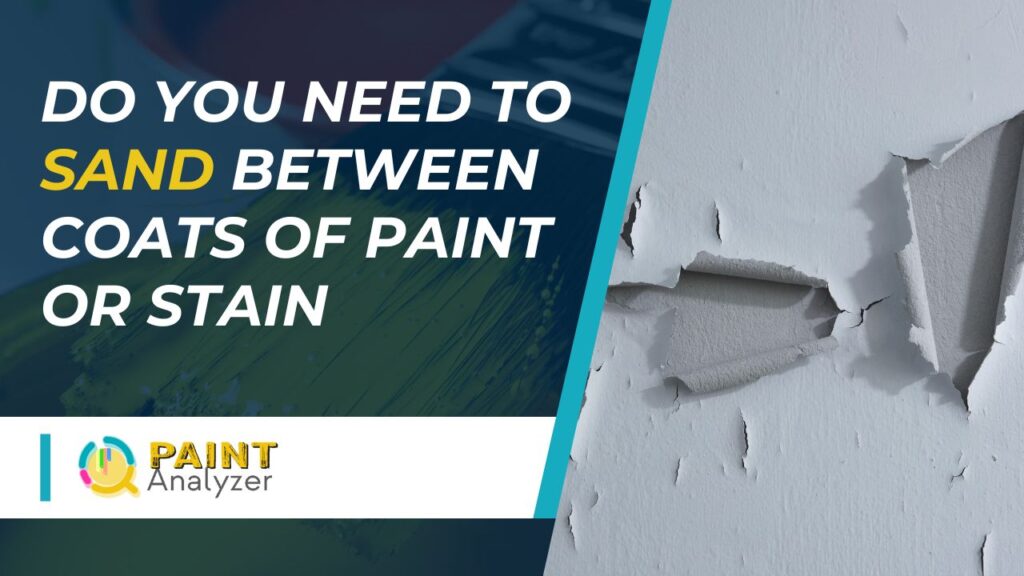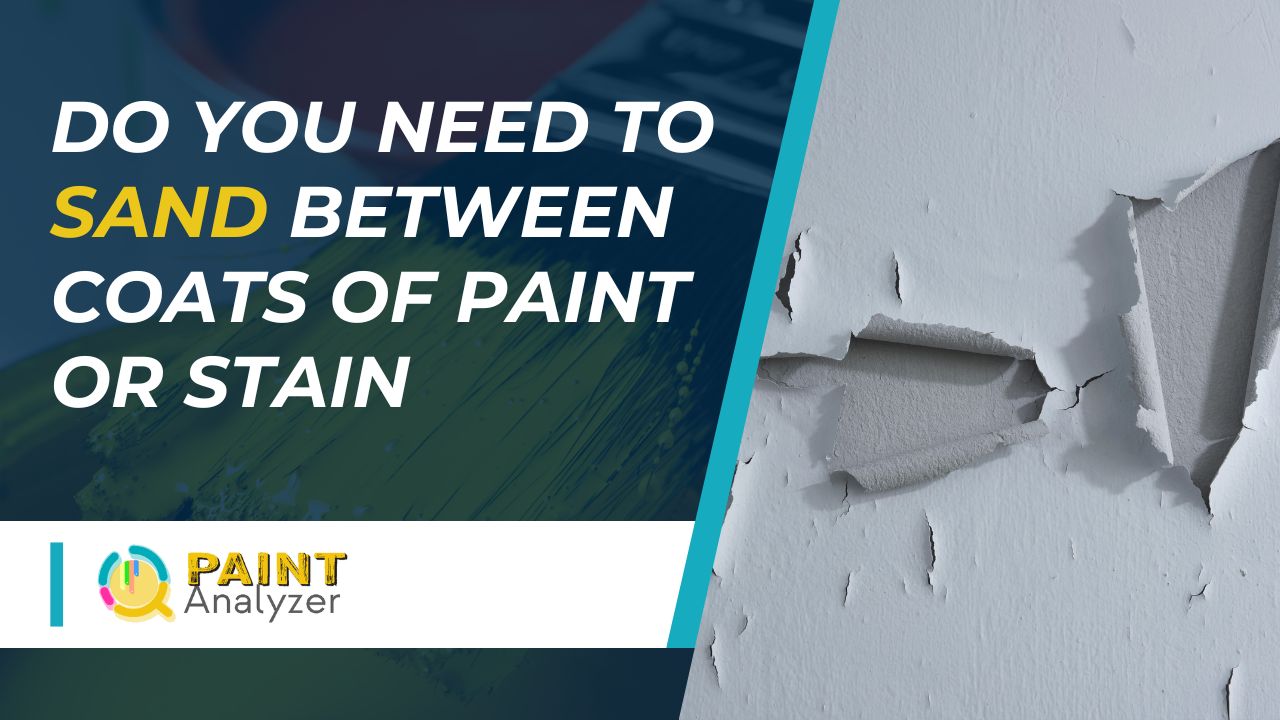When painting or staining any surface, it is important to understand the best practices and techniques to ensure a successful project. Sanding is essential preparation before painting or staining, but do you need to sand between coats of paint or stain?
Sanding between coats of paint or stain is not essential, but it is highly recommended to ensure a smooth, even finish. Sanding between coats can help to eliminate any bumps and ridges that may have developed during the painting or staining process, and it ensures that the color and texture of the finish are uniform across the entire surface.
This blog will discuss whether or not sanding between coats of paint or stain is necessary, and if so, what type of sandpaper should be used.

What Are The Benefits Of Sand Between Coats?
One common question that arises during painting or staining projects is whether sanding between coats is essential. This largely depends on the desired finish, the condition of the surface, and the type of paint or stain being used.
Sanding between coats of paint or stain serves several purposes and can significantly impact the project’s outcome. The main reasons for sanding between coats are:
Improved Adhesion
Sanding between coats of paint helps to ensure that the paint adheres to the surface better. If you don’t sand between coats, the paint can flake off or become uneven. Sanding creates a textured surface, which helps the paint bond to the surface more effectively.
Reduced Bubbling
You need to avoid creating air bubbles in the paint when painting. Sanding between coats helps to reduce the risk of bubbles forming in the paint, resulting in a smoother finish.
Create An Uniform Look
Before applying a new coat of paint, light sanding can assist in smoothing out the paint and producing a more uniform appearance.
Better Durability
Sanding before new coats can help improve the paint job’s durability. Creating a better bond between the paint and the surface, the paint is less likely to chip or flake off.
A Step-by-Step Guide to Sanding Between Paint or Stain Coats
Sanding between paint or stain coats is an integral step in ensuring a smooth, durable, and beautiful finish. But this sading process will be a little different than what you may be used to. It requires more care and attention to detail to get the best results. To help you get started, here’s a step-by-step guide to sanding between paint or stain coats.
Step 1: Sand Paper Selection
The first step is to choose the right sandpaper. The key is to use a paper appropriate for your working surface. Arrange medium-grit sandpaper, like 80 to 120 grit, for wood surfaces, and finer grit, like 180 to 220 grit, for metal, plastic, or glass.
Step 2: Sanding
Once you’ve selected the right sandpaper, it’s time to start sanding. Start by lightly sanding the surface in a circular motion. Make sure to sand evenly and don’t apply too much pressure, as this can cause scratches or damage to the paint or stain. The best is to sand down with your hands instead of a sander.
Step 3: Sanding Techniques
When sanding, using the right technique is important to ensure a smooth finish. For example, when sanding wood, you may want to use a horizontal or vertical pattern. This will help to minimize scratches and other imperfections. Also, make sure to sand with the grain of the wood to prevent any abnormal wear or tear.
Step 4: Dust Removal
Once you’re done sanding, cleaning the surface is important. Use a clean cloth or vacuum to remove any dust or debris that may have been created during the sanding process. This is an important step, as any leftover dust or debris can interfere with the adhesion of the paint or stain.
Step 5: Inspect
Inspecting the surface before you begin painting or staining again is important. Make sure no brush strokes or bubbles can interfere with the finish. If you find any, use medium grit sandpaper to gently sand them away.
Is Sanding Necessary When Applying Stain to Cedar?
When considering painting vs staining cedar, sanding is necessary to ensure the surface is smooth and free from imperfections. This step is crucial for achieving a uniform and professional finish. By sanding the cedar before applying the stain, you can enhance the wood’s natural beauty and ensure the stain adheres properly.
Tips For Sanding Between Coats
If you’re painting a piece of furniture or a wall, sanding between coats of paint is essential. It helps to ensure that the paint adheres properly, provides a smooth and even finish, and helps to avoid any bumps or imperfections in the final product.
But sanding between coats isn’t always easy, and if you don’t do it correctly, you could have a less-than-desirable result. To help you get the best results, here are some tips for sanding between coats.
Ensure Paint Has Dried Completely
Before sanding, ensure that the paint you’ve applied has dried completely. Normally it takes 24 hours for the paint to dry fully, so wait out the full drying time before sanding. If the paint isn’t dry, the sandpaper will clog up and won’t do its job properly. If you’re in a hurry, you can use a blow dryer to speed up the drying process.
Choose the Right Sandpaper
The type of sandpaper you choose can significantly affect the result. For sanding between coats, it’s best to use medium-grit sandpaper because you need to be gentle enough not to damage the paint but effective enough to provide a smooth finish.
Sand in a Circular Motion
When you start sanding, make sure to use a circular motion. This will help prevent any unevenness in the finish and make the end look much smoother.
Don’t Forget To Wear Safety Gear
It’s important to remember to wear safety gear when sanding. Make sure to wear a face mask and eye protection to prevent dust and debris from getting into your lungs and eyes.
Sand Between Coat: what do you need to know?
Conclusion
Sanding between coats of paint or stain provides many benefits for a high-quality finish. It ensures a smooth and even finishes by removing any bumps or imperfections, and it helps the coats adhere more strongly.
Sanding can be done by hand or with a power sander, but it’s important to use the right grit of sandpaper and to work slowly and carefully for the best results. With the right technique, sanding between coats will help you achieve a beautiful finish lasting for years.
